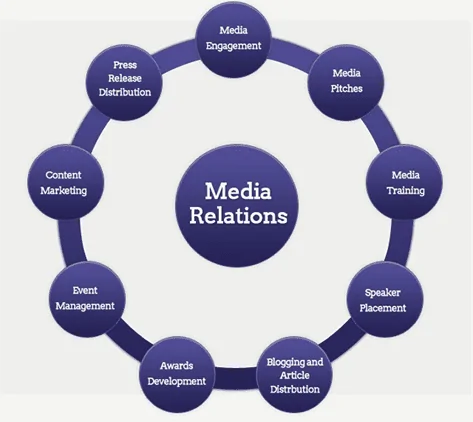What is the Role of Public Relations in Private Sector?
List of Role of Public Relations in Private Sector:
In every organization, a PRO plays more or less similar role. The difference if any will be because of the requirements or the objectives of the organization.
All private organizations are profit-oriented. To achieve their objectives, they function in a competitive approach using aggressive marketing strategies. For the manufacture and marketing of their products/services, they depend on many categories of public.
A good PR campaign gives priority to the interests of its public’s in every decision affecting the functioning of its business. This is because it is assumed that the organization operates due to the support of all these people employees, customers, shareholders and community.
The public’s may have different interests, the management has to maintain .a fair ratio of benefits to all the public’s to get the goodwill of the general public.
Also read | Meaning of Choice of Media to Communicate the News.
Coordination and Counseling:
The PR has to counsel and assist the management in formulating and implementing effective policies towards each of the public’s. Also, the PR person has a role in maintaining inter-departmental coordination.
Planning Communication Activities:
PR process involves research, planning, executing and evaluation. The PR person has to conduct each of these functions effectively to bring about a favorable attitude among the public’s towards the organization. The person has to make the plans for all these activities.
Also read | What is Public Relations Media?
Image Building:
Image building is a long-term and sustained programme. The PR plays a crucial role in this campaign. Image is the overall impression of a company in the minds of its various public’s.
A company’s credit worthiness, its concern for its employees, its quality of products and its discharging of social responsibilities, all contribute towards its overall image.
To promote its image, a company uses its corporate name, some emblem, or a slogan, which it carries in all its communications through various mediums.
Public Relations and Marketing:
PR must help the management in planning long-term strategies. For that, the PR has to know what is happening to the business.
Also read | Meaning of Media Relations.
The PR has to see the enterprise as a whole and that the marketing department must have coordination of all departments. Well planned marketing strategies coupled with PR efforts can help the company achieve success.
The PR efforts should involve some innovative ways like focusing on corporate image, communicating in regional language, gathering feedback from customers, conducting seminars involving decision-makers like interior decorators and architects and appreciating regional differences in consumer perception by focusing on varied festivals.
Crisis Management:
During a crisis, PR has an expanded role to play. The PR department should conduct constant monitoring and collect feedback to detect early warning signals.
Also read | What is House Journal?
The PR person should keep in mind the long-term effects. Communication links should be strengthened for negotiations and to present the company’s side of the story. Hence, the PR’s role in private sector is preventive as well as curative and informational as well as promotional.
Employee Relations:
It has now been realized that for employees good pay alone is not enough, what they need is better working conditions, challenges, recognition and a role in decision-making too.
Human Resources Development (HRD) thus has become an area of major concern leading to sharper corporate personnel policies. Companies are now keen to build a reputation of becoming a good company to work for. The PR thus has a key role in evolving an employee-friendly management policy.
Also read | The role of Public relations in the Public Sector?
Internal Communication:
In any organization, effective communication is now a multi-way process through a variety of channels. Communication in an organization may be formal and informal, vertical and horizontal and upwards and downwards.
To achieve success, employees must be empowered with knowledge. Employees should know the existing policies, changes and the rationale behind any major decision of the company.
Today it is required to avoid uncertainty, anxiety and rumors which may trigger of labor unrest and hurdles in operations. Thus, information to employees must be timely, honest and adequate.
Also read | What is International Public Relations Associations (IPRA)?
Communication channels may be divided as oral, printed or written and audio visual. Oral communication includes public address system, personal queries and meetings.
Printed or written includes direct mail, notice board, letter and house journal. Audio-visual includes video, film, exhibition and slides. Communication strategies must be planned keeping in view the objectives to be achieved, the situation and the time.





